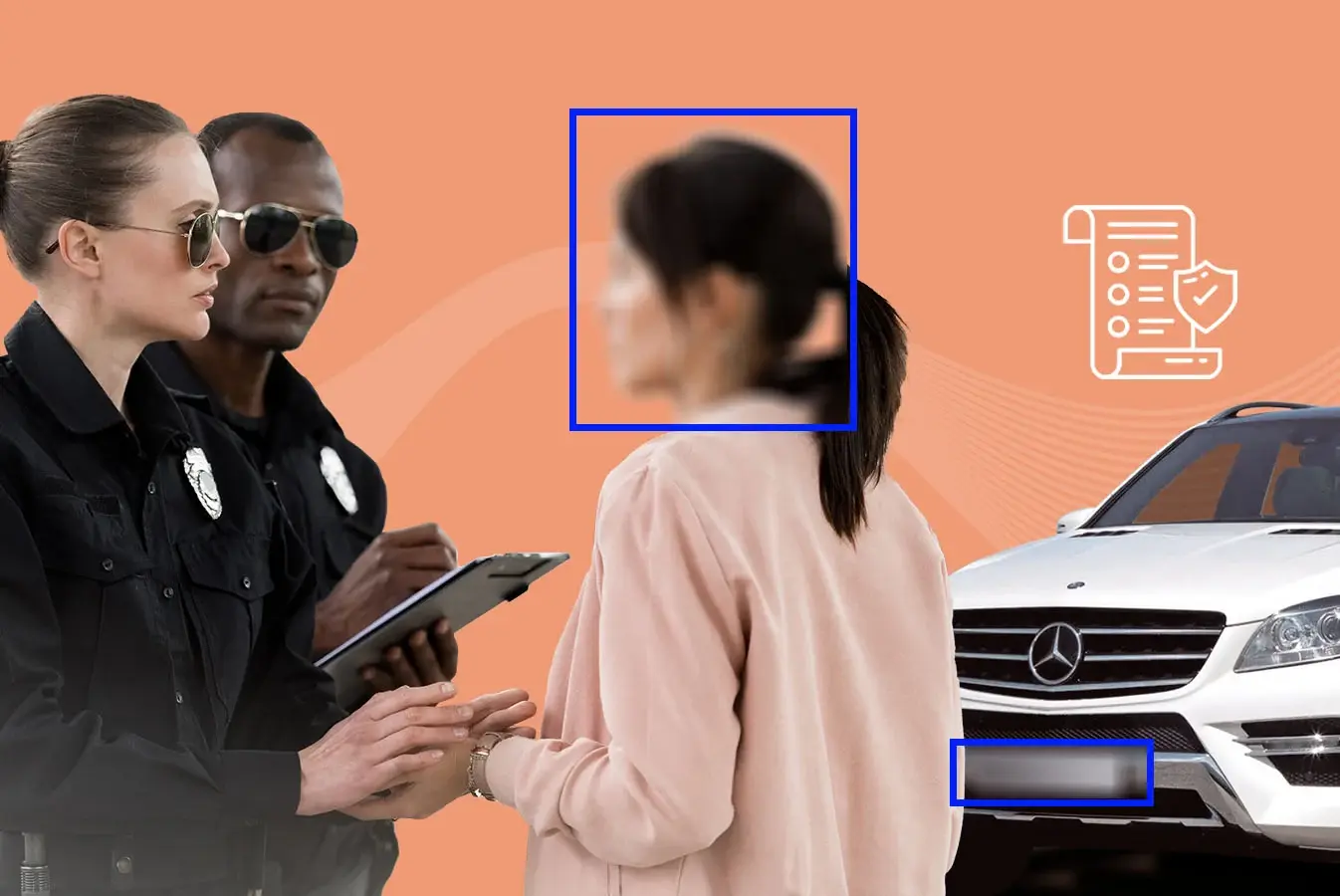Police officers all across the globe are working non-stop around the clock.
Hearing it out from the Delta Police Department, police officers are serving their duties 24 hours, 7 days a week, 365 days an year, to make the world a better and safer place.
This applies to all police agencies across the globe!
Each police officer spends hours every day performing their responsibilities to maintain law and order. These officers file each event and correlated elements into cases, with each case having its respective reports filed by these officers.
However, the problem that officers face is when these reports are to be made public. Case reports cannot be presented to public bodies in their intact state. This is due to numerous legal constraints that are implemented because of the information carried in these case files.
The only solution for police officers to go for is redaction of these documents.
But for the police, redaction is not a task as easy as it is said. What are the hurdles for redaction in a police department? Why do we need to do it? What are these legal constraints for redacting a case file document?
This blog will be exploring all that, and you’ll have to read along to find out the answers.
Why Can Cases Not Be Made Public With The Exact Information They Carry?
The simple answer – Compliances!
Before we get technical, consider it with an example like this:
Officers of a local police department are assigned a case to investigate the kidnapping of a minor. Investigators would collect evidence for agencies, from where the police department would accumulate their evidence for relevant cases.
The police department would use the evidence to identify potential suspects, investigate and interrogate them, then reach to a conclusion for the case to retrieve the abducted based on the information received.
Throughout the entire process, each phase was documented and recorded in a case file. This included information about the victim, potential suspects, time and date when the crime occurred, location of the crime scene, evidence files relevant to the case and much more. These files can be both physical and digital in nature.
The case file carries information that is termed as PII (Personally Identifiable Information), which cannot be disclosed to public officials under most circumstances. This includes names and personal details of most individuals, such as credit card numbers, medical information, social security numbers, and other relevant information.
The solution – REDACTION!
Legal compliances do not allow such information to be disclosed with ease. Therefore, redaction is a solution that allows police officials to conceal such information in digital content, making it permissible for public disclosure.
Read more on PII Redaction Software
This is important as several laws such as AB-748 of California demand, under most circumstances, for records and evidence to be disclosed to the public after a withholding period of 45 calendar days.
Under most circumstances this is applicable, and as for those where it isn’t, redaction and other practices are required to be implemented to make the content presentable to the public.
.png?width=3215&name=Infographic%20Small%20New%20850x350%201-min%20(1).png)
Why Is Redaction So Important For The Police?
Well, if you want a one-liner:
The law demands it!
Redaction allows you to disclose records and evidence, while concealing information that could potentially risk the life, physical or digital property or any other associated element of an individual. PII information encompasses all sorts of sensitive data that, if disclosed, could potentially lead to chaos.
Which is why not one, but several legal compliances demand redaction, varying slightly in further details based off the origination of the law and where it is applicable.
Moreover, if redaction were to be inadequate, it could lead to severe charges and penalties by the law against those who failed to adhere to PII privacy laws and compliances.
The reader can find further details on the topic on How To Prevent Inadequate Digital Evidence Disclosure
Isn’t Redaction A Meticulous Process?
Indeed, it is. Redaction is a simple yet time consuming process. Digital content redaction involves different procedures for different data types. For images and documents, it is simple involving masking with one layer overlay, that is used to redact any confidential information by blurring it out or laying an opaque color over it.
The same idea is utilized for video redaction. However, things get difficult with videos as the objects present are not static in terms of placement and move around, thus giving the need to redact each frame individually.
Audio redaction involves muting segments that contain confidential information or overwriting it with another sound effect, such as a bleep.
Comprehend how long it takes to redact a large amount data, such a long stream of video footage taken from a CCTV camera.
But that’s a dilemma for manually redacting content. What if we were to be smarter and make our systems smart – with AI – and automate redaction through automatic detection techniques?
Saves a lot of time off your hands, right, officer?
Want to read more on how automatic and manual redaction stand off against one another and what if we were to use an accumulation of the two? Then go check out Automatic Redaction Or Manual Redaction – Which One’s Better?
What Police Officers Need Is An Optimal Redaction Tool
Now that we know that redaction is an officer’s way out of a possible, unpleasant situation, what we need is the appropriate tool for an officer to use.
Police officials would not have the time or capacity to learn a complex tool that will take several hours' worth of training to prove to be fruitful – they have bigger priorities and much more to use those hours on.
Instead, they would prefer a tool that is easy to use and user-friendly, while still being complete. A redaction tool that accommodates most data types, allows manual and automatic redaction for better accuracy and efficiency and more, would suffice for every police officer.
Before you start with the hassle of searching for the best redaction software the market has to offer, we would like you to have a look at our list where we are Comparing The Best Video Redaction Software.
VIDIZMO - Provider Of A Complete Redaction Tool
VIDIZMO, an expert in the field of video content management for the past two decades, has a Redaction Tool that can be used as an integral part of both products, EnterpriseTube and the Digital Evidence Management System, as well as a standalone solution.
The Redaction Tool works best at redacting videos by blurring out, pixelating or placing a black opaque box over a target object. What makes the tool more efficient is that it uses AI to detect elements such as faces and license plates, which further allows tracking and redacting them throughout the video. Additional masks can be added to the video too for redaction for custom objects and added accuracy.
The Redaction Tool is also capable of using the same masking techniques to redact elements out of images. For audio files, the tool can be used to mute out a segment of the audio or override it with another sound such as that of a bleep. For an officer, this is highly useful when sharing interrogation and 911 call records with the press and other bodies.
Another great advantage of using VIDIZMO’s tool is that it allows the process of automatic detection to execute in the background, saving the user a decent amount of time. After detection, redaction can be performed with one click. Considering how crucial time is for the police department, this is an element worth consideration.
Using a tool as simple yet as fulfilling as VIDIZMO’s Redaction Tool, officers will be able to meet the one requirement present in a great deal of legal compliances such as HIPAA, GDPR, CRoC, CJIS, FOIA, ABN and more – the requirement to redact confidential information such as PII data.
Check out our Detailed Guide On Redaction : All You Need To Know for a better understanding of redaction and how VIDIZMO incorporates it.
Redaction isn't the only element in which VIDIZMO takes pride in. See the full set of features VIDIZMO DEMS has to offer alongside redaction.
Feel free to test the tool yourself with a free trail today!
Posted by Muhammad Nabeel Ali
Nabeel is an Associate Product Marketing Manager at VIDIZMO and an expert in evidence management technologies. He is actively researching on innovative trends in this domain such as Artificial Intelligence. For any queries, feel free to reach out to websales@vidizmo.com





